Lost in History at Monte Albán
I go to ruins for the pretty scenery. In theory, I also go because I enjoy soaking in history; but as my trips to various sites are often somewhat unplanned, I rarely read as much background material as I should.
Such was the case with Monte Albán. Oaxaca had called out to me mainly as a chowhound destination. I should be ashamed to admit I didn't even know there were several Zapotecan settlements all less than an hour from Oaxaca City...but, eh, I really didn't have much time to prepare.
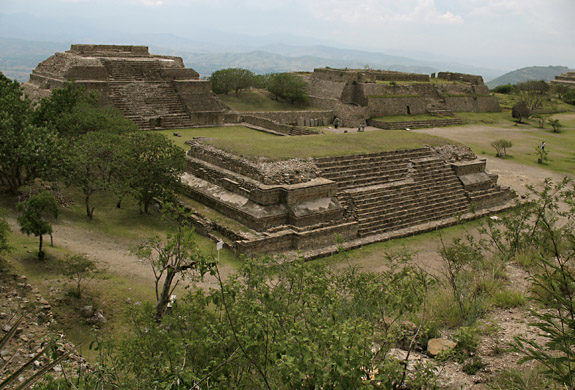
We decided Saturday night that Monte Albán was the plan for the following morning; so my lazy ass didn't get around to even reading my guidebook's section on the area. We got a slow start—as three gals sharing a bathroom sometimes do—and after a leisurely breakfast of delicious chilaquiles finally headed out to tourist bus office at Hotel Rivera del Angel.
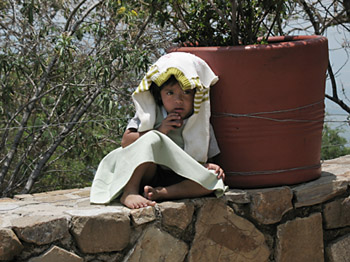 Girl looking bored outside the visitor's center |
Hilltop Monte Albán was the capitol of the Zapotec civilization for about 1200 years. Archaeologists recognize 5 distinct periods in the Valley of Oaxaca's history, called Monte Albán I-V. The remains of the complex mostly date from Period III (300-800 A.D.). Periods IV and V saw the invasion by the Mixtecs, who won the war despite small numbers, due to Monte Albán's declining power and population. The civilizations blended to create new art and architecture, seen in other nearby sites like Yagul and Mitla.
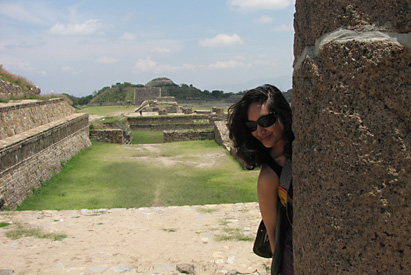 Jasmine among the ruins |
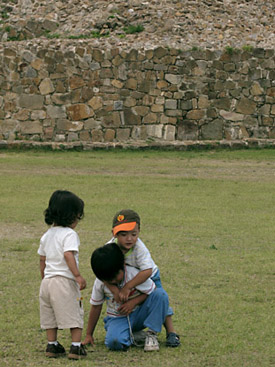 Kids playing in the main court |
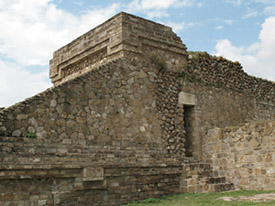 Possibly a T-P-A? |
The lawns around the ruins themselves seem rather manicured. Hardly a bad thing...but not exactly the fantasy of buildings hidden within creeping jungle overgrowth. The site was relatively busy, mainly with locals, but a weekday or early-morning visit should see fewer crowds. My guidebook notes that it's a nice picnic spot, and I'd have to agree.
The small museum in the visitor's center contains beautifully-preserved bas-reliefs; the ones outside on the site are replicas. The museum also features artifacts from the tombs, such as pottery, weapons and full skeletons. The attached store has a wonderful book collection as well, and would probably be a good place to pick up a map or guidebook before heading out to the site.
Even without really learning anything about the Zapotec or Mixtec civilizations, I greatly enjoyed seeing the ruins. The pyramids are not as grand as those found elsewhere in Mexico, and we grew a little weary of T-P-As, but you can't beat the proximity or ticket price.